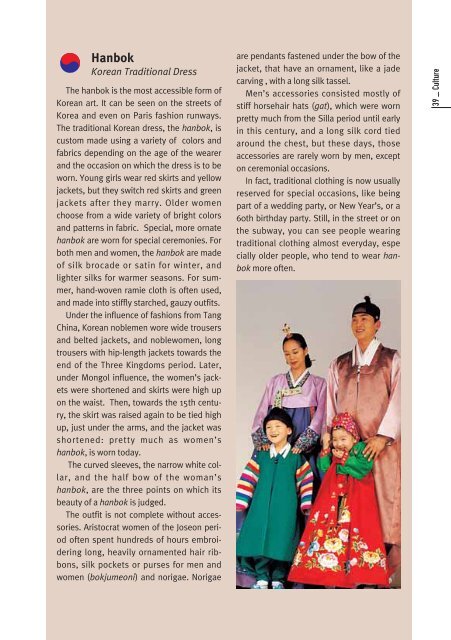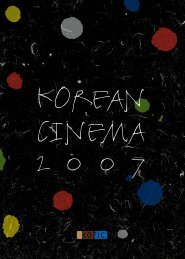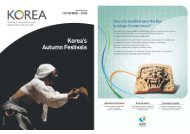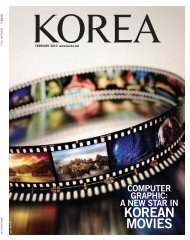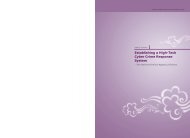HELLO from KOREA
Hello-Eng(3.3) - Korea.net
Hello-Eng(3.3) - Korea.net
- No tags were found...
You also want an ePaper? Increase the reach of your titles
YUMPU automatically turns print PDFs into web optimized ePapers that Google loves.
Hanbok<br />
Korean Traditional Dress<br />
The hanbok is the most accessible form of<br />
Korean art. It can be seen on the streets of<br />
Korea and even on Paris fashion runways.<br />
The traditional Korean dress, the hanbok, is<br />
custom made using a variety of colors and<br />
fabrics depending on the age of the wearer<br />
and the occasion on which the dress is to be<br />
worn. Young girls wear red skirts and yellow<br />
jackets, but they switch red skirts and green<br />
jackets after they marry. Older women<br />
choose <strong>from</strong> a wide variety of bright colors<br />
and patterns in fabric. Special, more ornate<br />
hanbok are worn for special ceremonies. For<br />
both men and women, the hanbok are made<br />
of silk brocade or satin for winter, and<br />
lighter silks for warmer seasons. For summer,<br />
hand-woven ramie cloth is often used,<br />
and made into stiffly starched, gauzy outfits.<br />
Under the influence of fashions <strong>from</strong> Tang<br />
China, Korean noblemen wore wide trousers<br />
and belted jackets, and noblewomen, long<br />
trousers with hip-length jackets towards the<br />
end of the Three Kingdoms period. Later,<br />
under Mongol influence, the women’s jackets<br />
were shortened and skirts were high up<br />
on the waist. Then, towards the 15th century,<br />
the skirt was raised again to be tied high<br />
up, just under the arms, and the jacket was<br />
shortened: pretty much as women’s<br />
hanbok, is worn today.<br />
The curved sleeves, the narrow white collar,<br />
and the half bow of the woman’s<br />
hanbok, are the three points on which its<br />
beauty of a hanbok is judged.<br />
The outfit is not complete without accessories.<br />
Aristocrat women of the Joseon period<br />
often spent hundreds of hours embroidering<br />
long, heavily ornamented hair ribbons,<br />
silk pockets or purses for men and<br />
women (bokjumeoni) and norigae. Norigae<br />
are pendants fastened under the bow of the<br />
jacket, that have an ornament, like a jade<br />
carving , with a long silk tassel.<br />
Men’s accessories consisted mostly of<br />
stiff horsehair hats (gat), which were worn<br />
pretty much <strong>from</strong> the Silla period until early<br />
in this century, and a long silk cord tied<br />
around the chest, but these days, those<br />
accessories are rarely worn by men, except<br />
on ceremonial occasions.<br />
In fact, traditional clothing is now usually<br />
reserved for special occasions, like being<br />
part of a wedding party, or New Year’s, or a<br />
60th birthday party. Still, in the street or on<br />
the subway, you can see people wearing<br />
traditional clothing almost everyday, espe<br />
cially older people, who tend to wear hanbok<br />
more often.<br />
39 _ Culture


